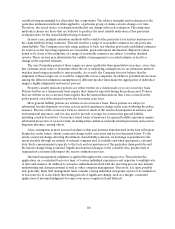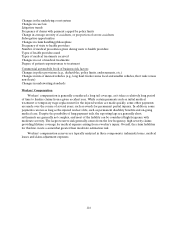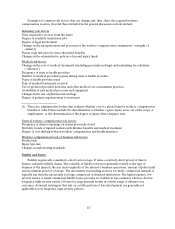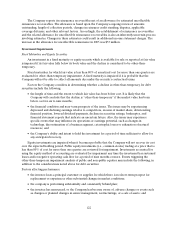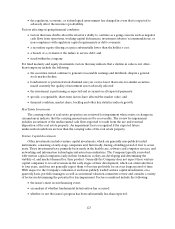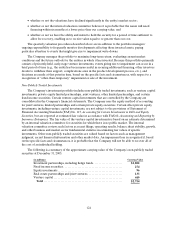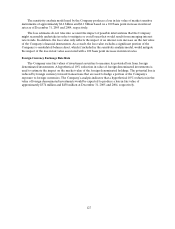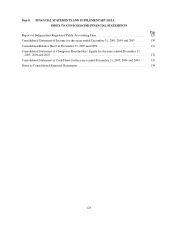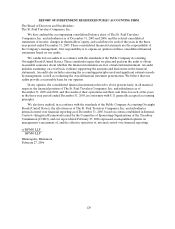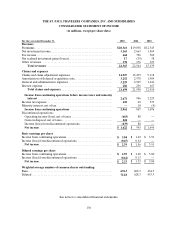Travelers 2005 Annual Report Download - page 132
Download and view the complete annual report
Please find page 132 of the 2005 Travelers annual report below. You can navigate through the pages in the report by either clicking on the pages listed below, or by using the keyword search tool below to find specific information within the annual report.
120
Non-catastrophe risk factors
Salvage opportunities
Amountof time to return property to residential use
Changes in weather patterns
Local building codes
Litigation trends
Trends in jury awards
Catastrophe risk factors
Physical concentration of policyholders
Availability and cost of local contractors
Local building codes
Quality of construction of damaged homes
Amount of time to return property to residential use
For the more severe catastrophic events, “demand surge” inflation,whereby the greatly increased demand
for building materials such as plywood far surpasses the immediate supply, leading to short-term
material increases in building material costs
Homeowners book of business risk factors
Policy provisions mix (e.g., deductibles, policy limits, endorsements, etc.)
Degree of concentration of policyholders
Changes in underwriting standards
International and other
International and other includes the international product line and other productsnot discussed
above. The principle component of “other” is assumed reinsurance written on an excess-of-loss basis,
which may include reinsurance of non-U.S. exposures, and is primarily runoff business.
International and other claim liabilities result from a mix of coverages, currencies and
jurisdictions/countries. The common characteristic is the need to customize the analysis to the individual
component, and the inability to rely on data characterizations and reporting requirements in the U.S.
statutory reporting framework.
Due to changes in the business mix for this line over time, the recently incurred claim liabilities are
relatively short term (due to both the products and the jurisdictions involved, e.g., the Republic of Ireland
and the United Kingdom), while the older liabilities include some from runoff operations that are
extremely long tail (e.g., U.S. excess liabilities reinsured through theLondon market, and several
underwritingpools in runoff). The speed of claim reporting and claim settlement is a function of the
specific coverage provided, the jurisdiction, the distribution system (e.g., underwriting pool versus direct),
and the proximity of the insurance sale to the insured hazard (e.g., insured and insurer located in different
countries). In particular, liabilities arising from the underwriting pools in runoff may result in significant
reporting lags, settlement lags and claim complexity, due to the need to coordinate with other pool
members or co-insurers through a broker or lead-insurer for claim settlement purposes.
International and other reserves are generally analyzed by program/pool, country and general
coverage category (e.g., U.S. Liability—excess of loss reinsurance, or General Liability—Municipalities—
by country.) The business isalso generally split by direct versus assumed reinsurance for a given
coverage/jurisdiction. Where the underlying insured hazard is outside the United States, the underlying
coverages are generally similar to those described under the General Liability and Automobile discussion
above, but under a different legal system. Where the underlying hazard is within the U.S., the coverage
involved is typically that of General Liability, but on anexcess or excess-of-loss reinsurance basis. Excess


